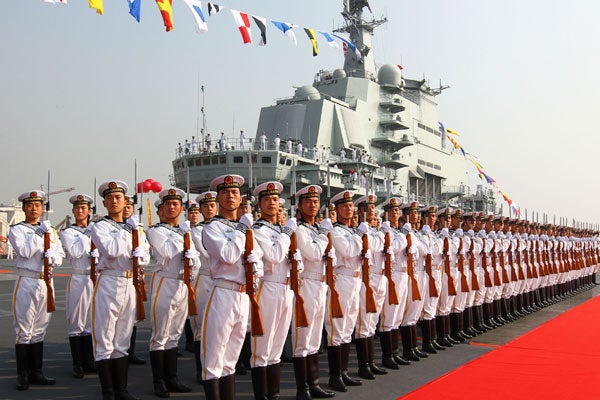Over the past year, the People’s Republic of China (PRC) has been increasingly assertive regarding its various maritime claims—both in the South China Sea with various Southeast Asian states, as well as in the East China Sea—with America’s Japanese ally. Part of this effort has seen a larger, more constant Chinese presence in the areas around the Senkaku Islands.
These uninhabited islands have been in dispute for at least the last half century, as China claims the islands are part of the territory of Taiwan (which Beijing claims as its own), and the Japanese rejecting that position. In fact, Japan rejects the very idea that there is any dispute at all, chalking up Chinese claims to the interest piqued in 1969 by a U.N. report on potential oil and gas deposits.
This issue came to a head most recently in 2010, when a Chinese fishing boat in the disputed waters rammed two Japanese coast guard vessels. The Chinese captain was arrested, but was returned to China rather than being tried in Japan. Following this incident, China curtailed critical rare earths exports to Japan, flexing its economic muscle to underscore its claims.
The past year has seen the issue revived, with various groups of Chinese and Taiwan protestors demonstrating in the waters around the Senkakus and a landing party from Hong Kong that planted Chinese and Nationalist Chinese flags. The United States, meanwhile, has reiterated its long-standing position that while it takes no position on sovereignty, the islands are considered under the administrative control of Japan, and therefore covered under the U.S.–Japan security treaty.
Over the past few weeks, however, the situation has deteriorated. Until December, both the Chinese and Japanese sides had specifically refrained from introducing military forces into the disputed area. Instead, both sides have relied upon civilian law enforcement vessels (including fishery protection vessels and maritime surveillance ships) to assert their claims.
In December, however, the Chinese also began to conduct overflights of the islands. Japan, in turn, has tried to intercept these flights. This has allowed Beijing to portray Japan of militarizing and escalating the situation, and China’s People’s Liberation Army Air Force (PLAAF) is now also sending combat aircraft into the vicinity of the area.
Even more worrisome, it would appear that Beijing is not limiting its military activities to just Japan. There is now a report that two American aircraft, a U.S. Navy P-3C anti-submarine patrol aircraft and a USAF C-130 cargo aircraft, were each tracked (apparently in Chinese airspace) by scrambled Chinese fighters after taking off from Japanese air bases. The implication would seem to be that the Chinese are preparing to deploy fighters to counter every aircraft takeoff from a Japanese air base.
Such a move by Beijing would represent a major heightening of tensions along the Sino-Japanese border, with potentially dire consequences given the number of civilian airliners that regularly transit the region, not only going to and from Japan, but also South Korea, Taiwan, and China itself. It would also raise the likelihood of an incident involving the armed forces of the PRC with those of the U.S. and Japan, akin to the EP-3 incident of April 2001, when a Chinese fighter collided with a U.S patrol plane near Hainan Island in the South China Sea.
While it is to be hoped that both sides will stand down their military components in the ongoing dispute, it is important to recognize that China’s increasing assertiveness regarding the islands is what is driving the crisis. The U.S. response should be geared to this reality. By expanding their measures to include overflights, Chinese decision makers left Tokyo the unpalatable choice of not responding, thereby weakening perceptions of their administrative control, or else responding with the only assets available—fighter aircraft.
If the PRC continues this path, they may find that they have forced the Japanese to consider even more unpalatable choices, including stationing Japanese law enforcement personnel on the islands on a permanent basis.
